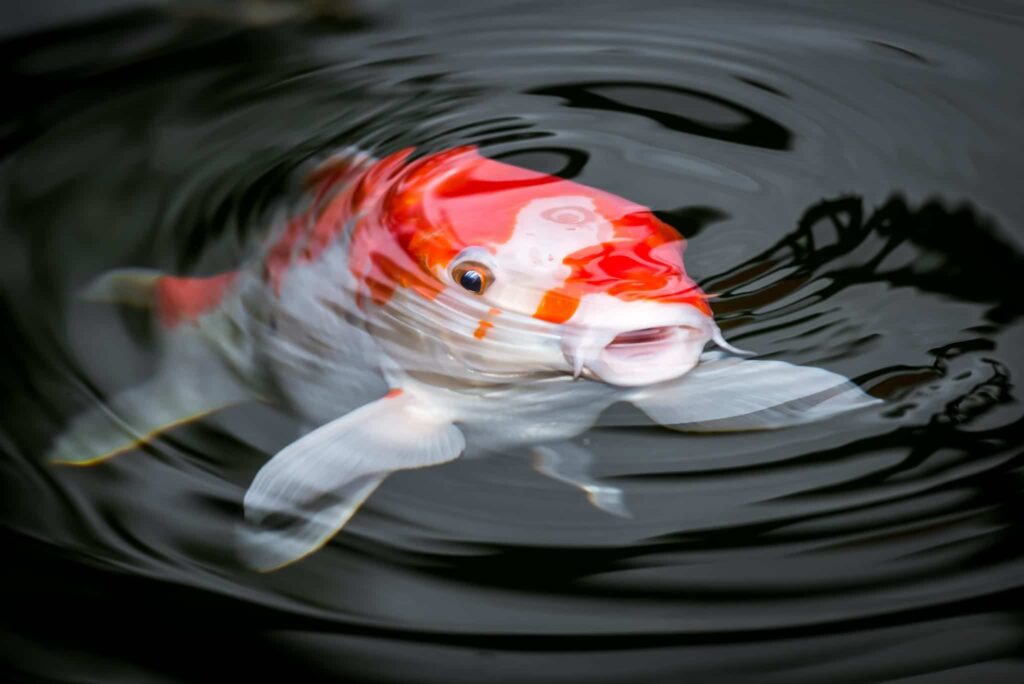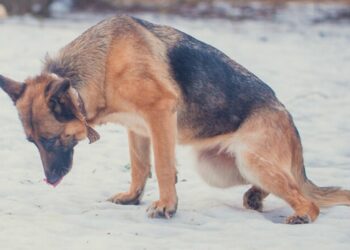Skin and gill flukes are common on swabs and are certainly among the most common parasites on koi and goldfish. The parasite cannot be found with the naked eye but must be determined by means of a microscope. When skin flukes or gill flukes are present, Koi regularly jump, rub and flash. Eating behavior may also be reduced. Reasons that koi suffer from these parasites are often poor water quality, lack of a healthy diet, and prolonged exposure to stress.
Not in all cases do these parasites cause immediate problems. With a few skins or gill flukes on a microscope slide, there does not necessarily have to be a problem. In worse cases, for example, when small wounds are visible, immediate action must be taken. When dozens of skin worms are found on one microscope slide, the same applies.
Common Causes of Koi Flukes
These parasites often occur in ponds that are not properly maintained. For example, because there is a lot of waste in the pond. Think of organic waste such as leaves, plant remains, and branches. The water quality in these ponds is not always optimal, so koi have to adapt. This weakens, giving parasites the chance to develop and strike quickly. In addition, stress and poor nutrition are common causes. Food ensures that koi do not get the right vitamins and nutrients and therefore weaken.
Damage to The Mucous Layer and Skin
Skin flukes have hooks that are visible under the microscope. This allows them to easily get stuck in the mucus layer. The hooks cause damage to the mucous layer and skin, which increases the chance that this will become inflamed and causes secondary infections.
Bacterial problems are secondary infections, or fungal growth, for example. Therefore, do not delay a diagnosis or treatment for too long when it is clearly visible that the koi are suffering from something. The longer you wait, the greater the chance that problems will occur and the koi will weaken further and further.
Development and differences
Both parasites need a host to survive. The fish form the host, without this host the parasite will be switched off relatively quickly and disappear. The skin worms, also called gyrodactylus, are viviparous. Under the microscope, the body of the offspring in a skin worm is often already visible.
Reading suggestions; Do you know everything about Koi fish?
This is different with gill flukes, also called dactylogram. These worms are not viviparous but lay eggs, which on average hatch after four to five days. The hatching of the eggs depends on the temperature, the lower the temperature, the longer it takes for the eggs to hatch and the new generation of gill flukes to become active.
Gill Flukes, Only Found On The Gills?
The name gill worm suggests that it only occurs on the gills of fish. However, nothing could be further from the truth, the parasite will be located in the mucous layer all over the body when it is present. The same goes for skin worms, they can be found all over the mucous layer. So also on and in the gills of koi.
Gill Flukes Symptoms
Skin and gill flukes are very easy to identify by using a swab. The only way to confirm with certainty that it is this parasite is to magnify it 50 to 200 times under the microscope. Common gill flukes symptoms of koi affected by these parasites include jumping and chafing, irritated skin, and loss of appetite.
Jumping, sanding, and flashing koi
The koi are itchy, they will rub against the walls of the pond or objects in the pond. They often look for places such as the pond pump, bottom drain, or hose that is in the pond. They jump above the water level several times, often two to four times in succession.

Thickened mucus layer and irritated skin
A thickened mucus layer is often visible on the head and the first part of the back or shoulder. The mucus layer appears thicker, is no longer a nice clean white, and appears to be cloudy. In addition, irritated skin is visible, the red veins of the koi are present on the pectoral fins and back. The normally white skin appears pink and minor damage and spots are visible.
Less appetite
The koi have less appetite, they seem less interested in food and do not react immediately when you are near the pond. It even happens that koi no longer eat at all, especially then it is essential to intervene.
Koi Fluke Treatment
Of course, it cannot be called an advantage, but skin flukes are the easiest to treat when compared with other parasites. In addition, most agents that can be used against skin and gill flukes do not affect the filter medium and biological life. So that it can be implemented during the treatment.
The latter is ideal, as the koi can build up its resistance in this way. It must be well determined whether intervention is necessary before adding an agent to the pond water. The continuous use of active substances against parasites also has adverse effects on koi.
A quarantine tank can possibly be used for the treatment, but in many cases, it is not possible to treat the entire population in it. This would create unnecessary stress with negative results for the fish. It is often better to treat the entire pond. Because gill flukes lay eggs, two treatments are needed instead of one.
Reading suggestions; Goldfish Are Much More Than Just an Exotic Pet
The eggs are not affected by the added agents so that after 4 to 5 days new gill flukes are present on the koi and the cycle starts again.
Treatment with Fish Pharma Triclam
This medicine is suitable for both skin flukes and gill flukes and is harmless to the filter. The active substances in this product are fenbendazole and triclabendazole. For skin worms, 4 grams per 1000 liters of water should be added to the pond. It is best to mix this beforehand in a bucket of water.
For gill flukes, the treatment should be repeated on the sixth day. During the treatment, ultraviolet lamps (UVC) and ozone installations should be switched off. Small amounts may also be used during the treatment since the active substances are harmless to biology (bacteria) in the pond.
Treatment with Colombo Morenicol Lerner
20 grams of this product should be added per 500 liters of pond water. It is best to mix the amount of Lernex first in a bucket with lukewarm water, then spread it over the water surface. This product cannot be used under a water temperature of 10 degrees Celsius.









